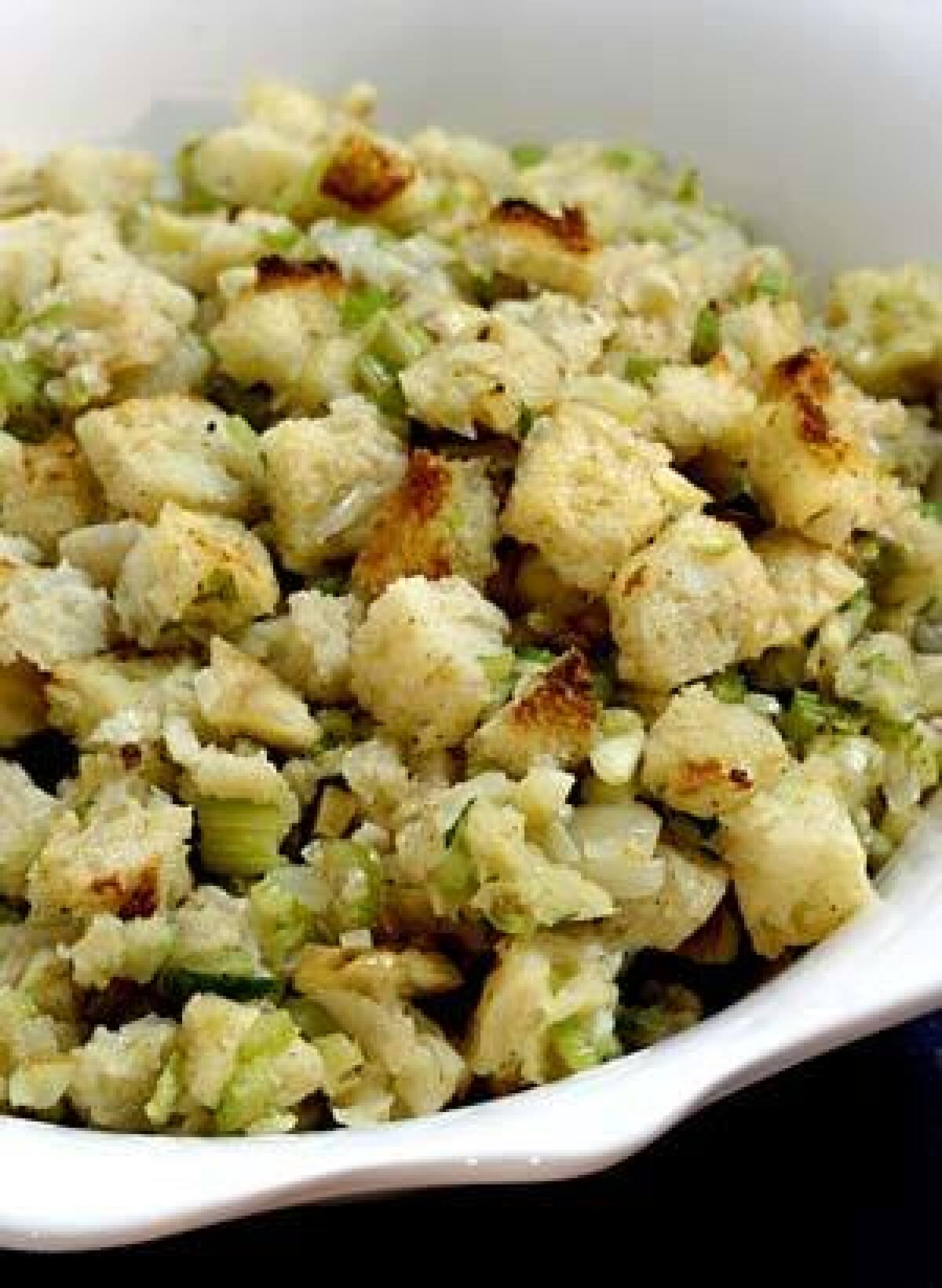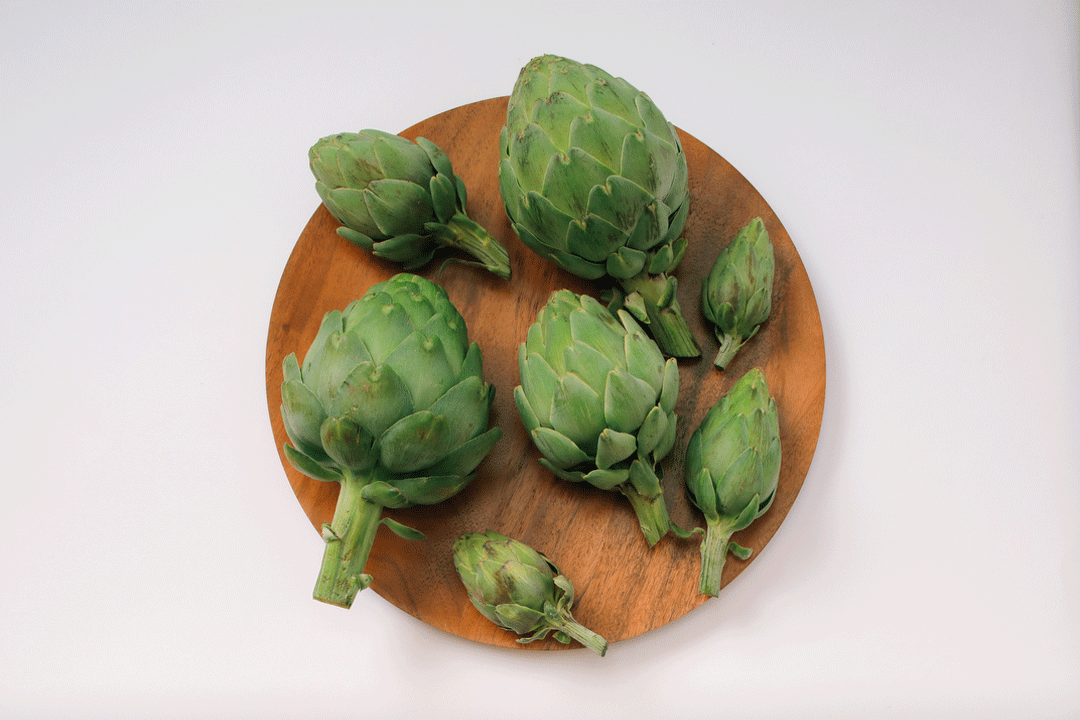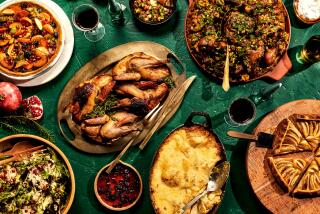The stuffing: Itâs an invitation to tinker

November 16, 2005 â Most of our Thanksgiving menus are so bound by family ritual they could be carved in stone. Thatâs why cooks are so thankful for stuffing, the one dish we can really play around with.
Sometimes this can get extreme. There are quite delicious stuffings made with Mexican tamales, a Puerto Rican chopped meat picadillo, Chinese glutinous rice and even chopped chicken livers. But for most of us, the absolutely required ingredients are few: bread cubes, a hint of aromatics to provide subtle flavor and a little liquid to keep it moist.
Thatâs a recipe for a blank canvas if ever there was one.
Not that thereâs anything wrong with that. A simple bread stuffing delicately scented with sage and celery is a perfect foil for all those good drippings a turkey contributes during roasting.
But that is just one of many ways to stuff a turkey. The question is: If youâre interested in flexing your creative muscles, where do you start?
One place is with the bread itself. Most stuffings these days call for dry bread cubes, but many older recipes specify bread crumbs. Bread crumb stuffings tend to be a little denser, while those made from bread cubes are a little lighter and have some variation in texture.
It is increasingly hard to find unseasoned bread cubes in grocery stores, but good stuffings require it. Seasoned bread cubes taste too much of stale, dried herbs. Good ones are simple to make: Dry fresh bread cubes in a 250-degree oven for a couple of hours, gently stirring now and then as the cubes on top dry out. This is a calming task on the day before Thanksgiving, when otherwise all heck is breaking loose.
A 1 1/4 -pound loaf of bread will make 1 pound of bread cubes, which is roughly 12 cupsâ worth. Figure a half-cup to three-fourths cup of bread per pound of turkey, depending on the amount of other ingredients youâre adding.
White bread is the default choice -- a sturdy country loaf that is not too spongy (or it will turn to mush). You can use a little sourdough, but not entirely; its flavor is too distinctive.
Southern cooks prefer cornbread (it should also be noted that this is Southern cornbread, not Midwestern, and it is slightly dry and not at all sweet beyond the natural flavor of the corn). You can use all cornbread, or substitute up to half white bread cubes for a stuffing that is lighter in texture and flavor.
The traditional seasoning for stuffing is onions and celery sauteed in butter or oil, then perfumed with a little powdered sage (âlittleâ is the operative word here -- sage is one of those herbs that quickly becomes overbearing).
One approach is simply to build on this base. A common addition is sausage -- usually pork sausage of the kind commonly sold in big plastic-wrapped tubes (how did these packages come to be known as âchubsâ?). This sausage is usually already flavored with sage, just like breakfast sausage, so use restraint when adding the herb.
Savor the options
Roasted, peeled chestnuts -- either chopped or ground in a food mill -- are another standard option. Combine them with dried fruit or sausage or both, or leave them by themselves.
In New England and the South, oysters are a traditional stuffing ingredient -- with white bread in the former, cornbread in the latter. Add a pint of drained, shucked oysters to a basic celery-and-sage stuffing and youâve got oyster dressing.
If you vary the base seasoning a little, other combinations are possible. You can add some chopped green bell pepper to the oyster dressing to give it a Louisiana twist. Chopped pecans stirred in just before stuffing complete the picture.
Substituting fresh rosemary for the dried sage, and adding toasted slivered almonds or chopped walnuts and dried cherries or another dried fruit would be more Californian.
Or you can really kick out the jams. My familyâs favorite stuffing is made by sauteing green bell peppers, onions and celery, then adding chopped, smoked beef sausage (such as kielbasa) and finally mustard greens.
Whatever kind of stuffing you make, be gentle when spooning it into the turkey. Trying to pack too much stuffing into the bird is probably the single biggest mistake most cooks make.
As the bread cubes absorb moisture and bake, they will expand. If the stuffing is over-packed, it wonât have any room to grow and it will instead get dense and heavy.
Remember that what doesnât fit inside the bird can be baked alongside in a covered casserole. Really good stuffing will be delicious even without the turkey.



